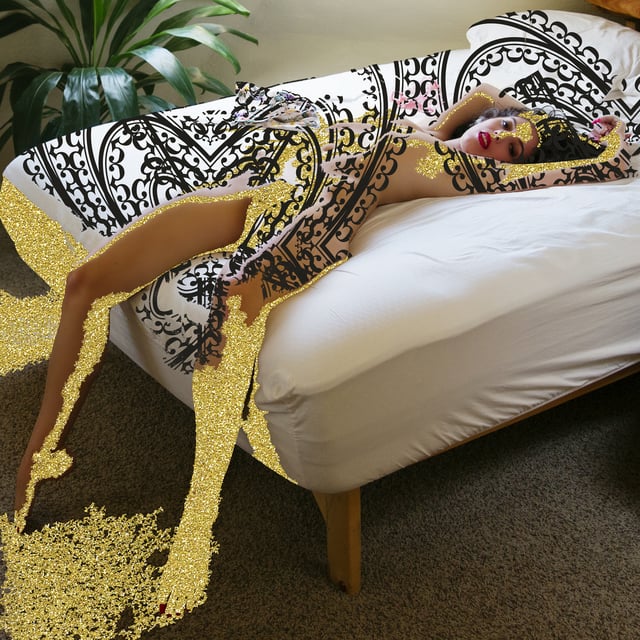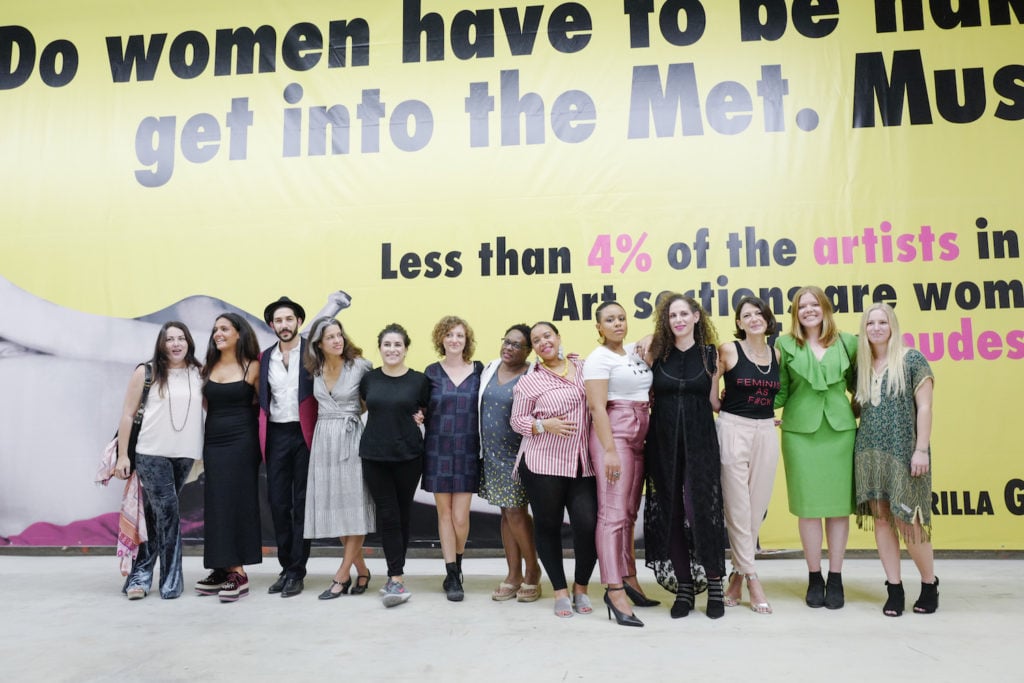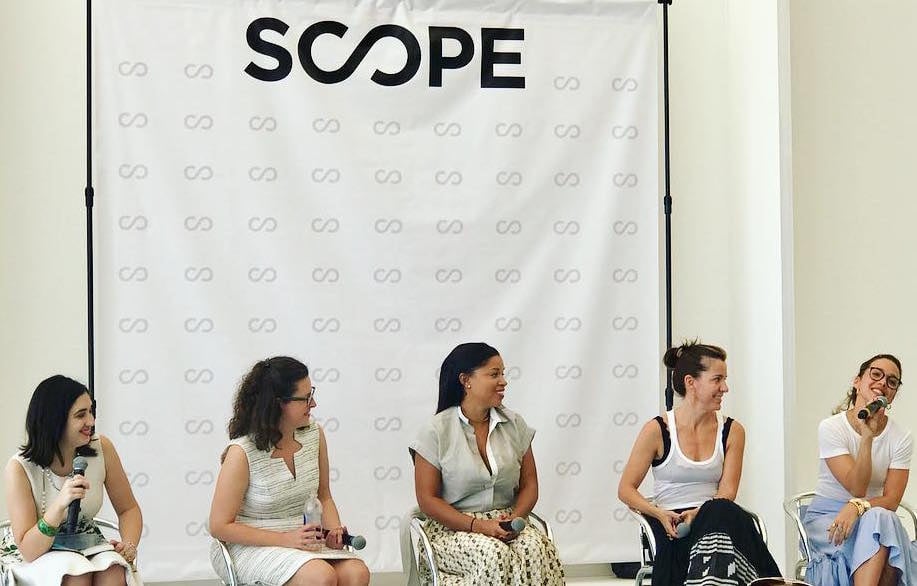Art Fairs
The ‘Weinstein Effect’ Flooded Miami Beach With Feminist Art—But Will It Last?
Visitors to Art Basel Miami Beach couldn't ignore gender inequality this year.

Visitors to Art Basel Miami Beach couldn't ignore gender inequality this year.

Sarah Cascone

On the heels of the viral #MeToo movement and an outpouring of sexual harassment allegations in recent months—including fallen art world luminaries Knight Landesman and Jens Hoffman—there was a distinctly feminist energy at Art Basel Miami Beach last week, an event not always known for its political high-mindedness.
From the debut of an all-woman art fair to an orgasming neon vagina sculpture in a hotel in South Beach to strong feminist art for sale at the fair itself, the cry for women’s equality felt louder than ever.
“We’re in a moment, we’re in a movement—perhaps even the beginnings of a revolution—right now,” said artist Zoe Buckman during a panel discussion on “Feminist Art for a New Era” at the SCOPE Art fair (which artnet sponsored and I moderated). Buckman showed a cluster of monumental boxing gloves covered in scraps of wedding dresses at Gavlak Gallery’s booth at Art Basel.
“I was simply thrilled to see such a strong feminist presence at the fair, writ large in so many deeply impactful ways,” Sotheby’s senior vice president Eric Shiner told artnet News in an email. He pointed to a Barbara Kruger text work, prominently positioned at the fair’s entrance, as well as to Judith Bernstein’s solo booth at the Box, and to PPOW’s display of work by Betty Tompkins, Carolee Schneemann, and David Wojnarowicz—“a temple to feminism and queer theory,” Shiner said.
While men continued to dominate Basel’s post-fair sale report, there was one major breakthrough on the market side for women. Abstract Expressionist Lee Krasner far outstripped her current auction record—$5.5 million, achieved just last month at Christie’s New York—with a $7 million sale at New York’s Paul Kasmin Gallery.
While the market still has work to do, one promising aspect of the week was the amount of money that went into the promotion of women’s art in Miami.

Fair. organizers Zoe Lukov and Anthony Spinelli with guests at the all-women art show, in front of a work by the Guerrilla Girls. Photo courtesy of BFA.
Take Fair., the all-woman art fair, which brought massive billboards by the Guerrilla Girls, among other overtly feminist works, to the Brickell City Center, thanks to co-sponsor and developer Swire Properties.
Though nothing was for sale at Fair., it clearly took significant investment to bring together the likes of Yoko Ono, Pia Camil, and the other women in the show. In another work at Fair., Micol Hebron filled a massive wall with posters showcasing the gender imbalance in gallery representation, for series called the “Gallery Tally Project.”

Sarah Cascone, Jennifer Scanlan, Mashonda Tifrere, Carolina García Jayaram, and Zoe Buckman speak on art and feminism at SCOPE Miami Beach. Courtesy of the National YoungArts Foundation, via Instagram.
“Galleries that do not have at least fifty percent female-identified artists are really screwing up and need to do a lot better,” said Jennifer Scanlan, curatorial director of the Oklahoma Contemporary Arts Center, during the talk at SCOPE.
This year, however, a number of Miami art spaces hosted distinctly feminist shows and events. Los Angeles’s Corey Helford Gallery presented a pop-up show of proudly feminist crochet artist and yarnbomber Olek at the Juxtapoz Clubhouse downtown, featuring a 20-foot-tall eight-legged Spider Woman sculpture.
Miami’s Nina Johnson opened a solo show featuring the bold feminine forms of Katie Stout, a designer who elevates lumpy women’s bodies into functional art in her lamps, mirrors, and other objects. At his Miami outpost, Thierry Goldberg showed paintings by Tschabalala Self inspired by New York City’s bodegas.
Then there was Tara Subkoff’s surreal and moving performance starring actress Selma Blair; Michele Pred’s Parade Against Patriarchy, which marched past the Miami Beach Convention Center; PULSE’s Pussy Photo Booth and fertility-themed installation from Fischer Cherry; Mark Borghi Fine Art’s mini-exhibition of “13 Women Who Broke All the Rules” at Art Miami; and Suzy Kellems Dominik’s I Can Feel, the 12-foot neon vulva which she considers a self portrait, at the Nautilus Hotel.
As much as we want to believe that real change is neigh, however, one has to also acknowledge the more cynical possibility that the trend could in part be the result of opportunistic marketing.
“One of my fears for this moment right now is what if it’s a fad. What happens next year when it’s no longer hot?” said Buckman. “There needs to be greater responsibility.”
“Miami was the first major [art world] event to happen after all this came to light, so it will be interesting to see what happens in terms of continuing the conversation in a positive way,” said Sara Kay, a New York dealer and the founder of the Professional Organization for Women in the Arts.
Kay, however, remains optimistic, as does Shiner. “I know that this was not a trend or a fad,” he said. “It was people finally realizing that feminism matters, even at a commercial art fair.”
The risk, of course, remains that such conversations are happening in a progressive echo chamber. “There’s two men here,” pointed out Buckman at SCOPE. “Thank you so much for coming, and having a penis—but you need to tell your male friends!”
Yet the results—the widespread outing and firing of serial sexual harassers—are undeniable. “The election unleashed such a torrent of anger among women and men that it took one domino—and his name was Harvey Weinstein—to fall, and that was it,” said Carolina García Jayaram, president of the YoungArts Foundation, during the talk. “The rest of us were ready, were ready just to let it out. And I don’t think it’s stopping anytime soon.”